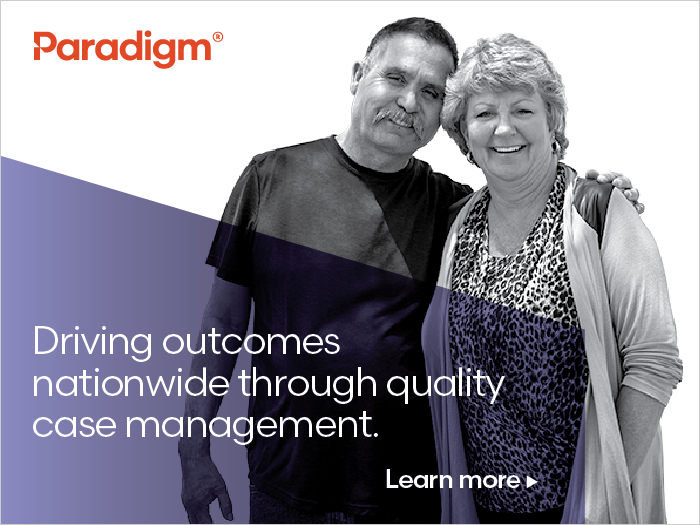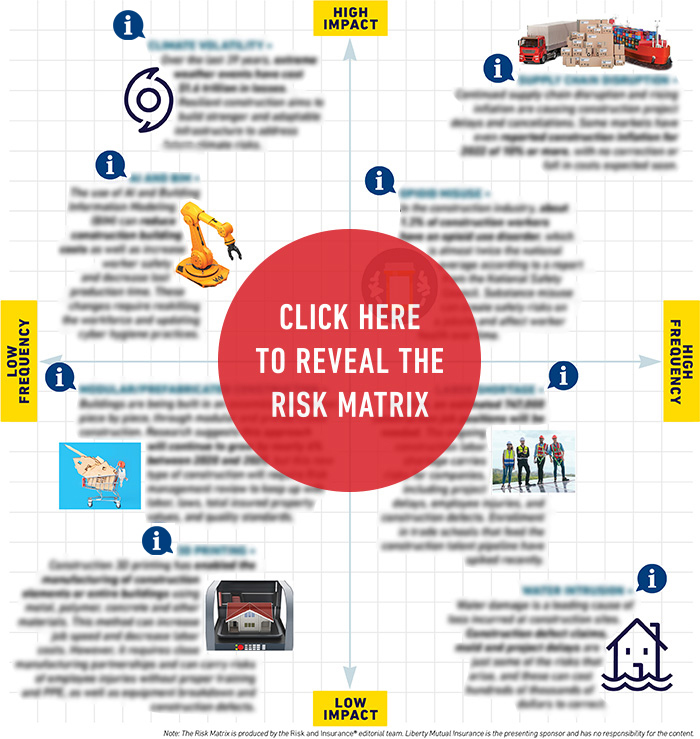The best of R&I and around the web, handpicked by our editors.
White papers, service directory and conferences for the R&I community.
Web replica of the print magazine.
Addressing mental health in the workplace is a delicate matter at the best of times. Add on the pandemic and an economic roller coaster, and it’s no surprise that mental illness continues to grow among U.S. adults.
Ensuring employees feel comfortable seeking support for their mental health can be further complicated by the impact of their ethnic and racial backgrounds.
Research conducted by the National Alliance on Mental Illness (NAMI) and The Hartford revealed workers who identify as Asian American Pacific Islanders (AAPI), Black and Latinx are less likely than their white colleagues to broach the matter of mental health in their workplaces.
As companies continue to shape their DEI strategies, “It’s important for leaders to appreciate that there are real differences across race and ethnicity when it comes to mental health concerns in the workplace,” said Susan Johnson, head of diversity, equity and inclusion at The Hartford.
Susan Johnson, head of diversity, equity and inclusion, The Hartford
Before workplaces can become core access points for mental health support, employers will need to consider the effectiveness of their communication strategies.
The Hartford-NAMI study showed that 30% of the U.S. workforce would not turn to any workplace resource if they needed mental health assistance. Privacy concerns, stigma and low awareness of employer offerings were cited among factors contributing to workers’ reluctance to seek mental health support at work.
The study also showed AAPI (35%) and Black (32%) workers were more likely than white colleagues (21%) to agree that aspects of their identity make it or would make it hard to discuss mental health at work.
The study concluded that employees of different racial identities perceived some dynamics surrounding mental health differently:
“Being the only — whether it’s the only Black or the only Latinx, the only AAPI worker — can bring about its own challenges and stresses,” Johnson said, including microaggressions, impostor syndrome, code-switching or bias.
The Hartford-NAMI research showed there are impediments to robust and equitable mental health support and no one path to meeting the mental health needs of a diverse workforce.
Nonetheless, U.S. workers who participated in the study identified four key actions employers can take to foster empathy and increase engagement around mental health:
The Hartford’s strategy begins with its board and executive leadership, providing them the resources to understand how to bring about an inclusive environment, Johnson said. “And then we’ve got some terrific engagement and communications mechanisms through our employee resource groups.”
In addition to an employee assistance program where staff receive support from trained professionals, Johnson has found the company’s Courageous Conversation Circles (C3) to be helpful in engaging employees around matters that influence their emotional wellbeing.
The Hartford describes C3s as “facilitated discussions that empower employees to discuss complex topics in a safe space, build trust and increase productivity.” In 2021, the company held more than 400 conversations where thousands of employees “respectfully discussed topics such as age assumptions, gender bias, race and inclusive language.”
“It’s important for leaders to appreciate that there are real differences across race and ethnicity when it comes to mental health concerns in the workplace.” — Susan Johnson, head of diversity, equity and inclusion, The Hartford
Identifying differences in employee perceptions around mental health may be key to developing more psychologically safe workspaces.
“We not only look at the universal data that our employees tell us relative to their experience of The Hartford,” Johnson shared, “[but] we also look at that data through the lens of diversity.We look at how employees feel relative to overall engagement, or to aspects of inclusion or trust in the workplace, to see if there are differences.”
By gauging the differences in employee perception, she said, leaders can explore what steps to take. “It’s really important to unpack the data across differences so that you understand where your opportunities are, and then you can build initiatives to get at them.”
The Hartford also uses performance reviews to support its commitment to DEI and psychologically safe environments.
“All employees are accountable for their behaviors, and we embed aspects of inclusive behaviors into our overall behavioral framework … and that feedback is incorporated into their performance evaluations,” she shared.
Company leaders are also expected to develop unit DEI plans, which are evaluated against specific criteria, she added. “That’s part of their performance feedback.”
Johnson described the unit DEI planning process as an opportunity for employee engagement: “We get such exciting and engaged participation from employees throughout the company, because they love to participate on their unit DEI plan.”
Weaving DEI into an organization’s performance framework, “does lead to our employees feeling safe, supported, respected, to talk about the issues that come about relative to anxiety or challenges or aspects of mental health at work.” &
Join 1000 Program Professionals in Scottsale for 3 Days of Networking, Programming, and Educational Breakout Sessions. The Best in Programs Meet Here!
Timing and accuracy of diagnostic test results can determine the course of an injured worker’s treatment plan, recovery, and claim.
Pinnacle Actuarial Resources’ Aaron Hillebrandt advises caution for those engaged in managing cyber risk—even those seeking a captive solution, given the unknowns and volatility associated with the cyber insurance market.
Kimberly Hamilton of PHLY has embraced an executive role where expanded product and underwriting capabilities are at the forefront. 
By building trust and partnerships during what is often a very challenging time, case managers are central to guiding injured patients back to health and meaningful work.
Accomplishing this in today’s work and health care environments requires case managers, and case management companies, to be better equipped and trained than ever before.
“There is almost an overwhelming range of workplace injuries and paths to wellness, so many employers today have a workforce that is spread across the entire country,” said Shannon Ford, Senior Vice President, Case Management Solutions for Paradigm. “To meet this reality, case management in workers’ compensation needs to be able to achieve a comprehensive range of services, while still staying highly focused on individual needs.” And when injuries become more challenging and complex, that’s when high-quality, people-focused, and expansive case management can be a real difference-maker in achieving positive outcomes.
Work-related injuries require case management solutions for a wide range of situations and circumstances, including coordination between multiple providers, patient history of previous injuries, multiple and complex injuries, and psychosocial or behavioral health concerns. “The higher the stakes of a case, the greater the need for resources and experience to address those challenges,” said Brenda Calia, Vice President, Case Management Delivery for Paradigm. “In the current environment, case managers must be equipped with the skills and resources to consistently achieve measurably improved outcomes for all types of cases, including the most complex and difficult injuries,” she said.
Shannon Ford, Senior Vice President, Case Management Solutions for Paradigm
Added Ford, “A one-size-fits-all approach to case management does not work. Person-centric and outcome-focused results require case management solutions that provide expansive options and the highest commitment to quality.”
Achieving cost-effective results that return injured workers back to their families and communities means dedicated solutions for any need. “To meet the variety and complexity of claim and injury types, comprehensive case management should provide a diversity of solutions that can be custom-tailored for any eventuality,” explained Calia. Above all, it’s about having the ability to guide injured workers through the entire recovery and return-to-work process. “Clients need access to a bigger set of tools. In addition to traditional telephonic case management, some cases may benefit from field case management. In other situations, working with a nurse triage service can assess the required level of care right at the injury site,” she said.
“Achieving a positive outcome in workers’ compensation is about returning injured workers to productive activity,” stressed Ford. “Case management should be able to meet this key part of the journey through vocational services and transitional return-to-work programs.”
Another critical element is the ability to provide nationwide coverage. “Workforces are larger, and more spread out than ever before. Clients need to know that injured workers will receive quality case management and guidance, no matter where they are located,” explained Calia.
Brenda Calia, Vice President, Case Management Delivery for Paradigm
Of course, any set of options in case management must be able to achieve the objective it is designed to accomplish, which is why assuring quality is just as important. “Excellence in case management needs to come from an established track record for achieving unparalleled outcomes on a long-term basis,” said Calia. According to both leaders, quality needs to be measured by time, consistency, and human-centric collaboration in the following ways:
“Building long-term, consistent, and collaborative client relationships requires the relentless pursuit to understand, meet, and exceed expectations,” said Ford. “It’s ultimately about a deep commitment and understanding that everyone is there to truly improve the lives of the injured workers we mutually serve.”
Paradigm Case Management Solutions was built to deliver the range of essential services that modern cases need, combined with the unparalleled commitment to quality that has set Paradigm apart in catastrophic care management for decades. “We offer flexibility through a wide range of services that can fit nearly any need and deliver the level of quality that has distinguished Paradigm in the marketplace for more than 30 years,” explained Calia.
Paradigm’s case management options include:
Care is at the core of the Paradigm approach. Paradigm’s expansive options, along with nationwide coverage and unparalleled commitment to quality, help to ensure the best possible outcomes for everyone involved in the process.
Learn about Paradigm Case Management Solutions.
![]()
![]()
This article was produced by the R&I Brand Studio, a unit of the advertising department of Risk & Insurance, in collaboration with Paradigm. The editorial staff of Risk & Insurance had no role in its preparation.![]()
Companies are tasked with keeping all workers safe. Prioritizing contractor safety protocols can help.
Strong provider relationships and proactive issue resolution are the key to appeals mitigation.
Cryptocurrency and blockchain are growing. The good news? The insurance industry’s response is already robust.
California’s workers’ comp system is unsustainable. Here’s why. 

COVID-19
Surviving The 2nd Wave of Corona
‘This too shall pass away’ this famous Persian adage seems to be defeating us again and again in the case of COVID-19. Despite every effort

